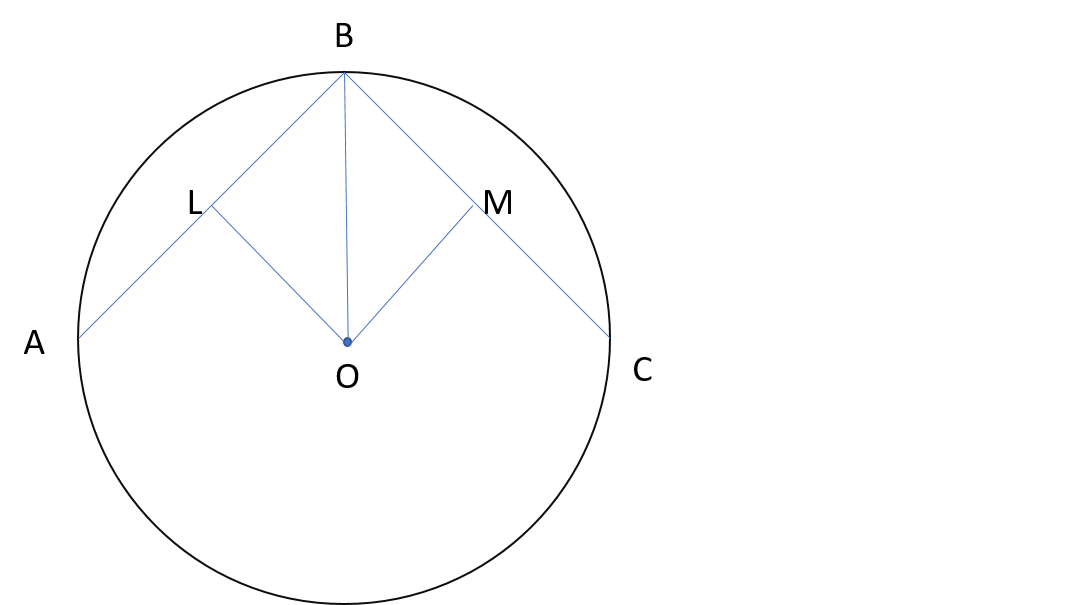Circular limit
x → ∞ lim x sin ( x 1 8 0 ∘ ) = ?
This section requires Javascript.
You are seeing this because something didn't load right. We suggest you, (a) try
refreshing the page, (b) enabling javascript if it is disabled on your browser and,
finally, (c)
loading the
non-javascript version of this page
. We're sorry about the hassle.
2 solutions
For any x sided regular polygon inscribed in a circle of radius r , our objective is to calculate the perimeter of the polygon.

The figure represents the given situation. O is the center of the circle and A B , B C are edges of a regular polygon. O L and O M are perpendiculars drawn on line segments A B and B C respectively. Since perpendiculars from center bisect the chord, thus we have,
B L = B M
O B = O B
∠ O L B = ∠ O M B
Therfore by RHS Criteration of congruency, Δ O L B ≅ Δ O M B .
Thus by CPCT, we have
∠ L B O = ∠ O B M
For any regular polygon of x sides, each angle is given by x 1 8 0 ( x − 2 ) .
Therefore, ∠ L B M = x 1 8 0 ( x − 2 ) . Thus ∠ L B O = 2 x 1 8 0 ( x − 2 ) .
Clearly,
r B L = c o s ( x 9 0 ( x − 2 ) ° )
B L = r c o s ( x 9 0 ( x − 2 ) ° ) and thus,
B C = 2 B L = 2 r c o s ( x 9 0 ( x − 2 ) ° )
Since it is a regular polygon,
Perimeter = ( x ) ( B A ) = 2 x r c o s ( x 9 0 ( x − 2 ) ° ) . . . . . . . . . . . . . . . . . . . . . . . . . ( 1 )
But as x approaches infinity the polygon tends to coincide the circle in which it is inscribed. Thus in that case the perimeter of the polygon becomes equal to the circumference of the circle in which it is inscribed.
Circumference of the circle = 2 π r
Thus, Comparing the perimeter of the infinite-sided polygon with the circumference of a circle we get,
lim x → ∞ x c o s ( x 9 0 ( x − 2 ) ° ) = lim x → ∞ x s i n ( x 1 8 0 ° ) = π
Hence Proved.
This is a really interesting proof! I "cheated" and used calculus:
x → ∞ lim x sin ( x 1 8 0 ∘ ) = x → ∞ lim x sin ( x π ) = x → ∞ lim π x π sin ( x π ) = π y → 0 lim y sin ( y ) = π ,
where y = x π → 0 as x → ∞ .
Very nice proof! Brilliant!
L = x → ∞ lim x sin ( x 1 8 0 ∘ ) = x → ∞ lim x sin ( x π ) = x → ∞ lim π x π sin ( x π ) = π As 1 8 0 ∘ = π radian Multiply up and down by x π Note that u → 0 lim u sin u = 1